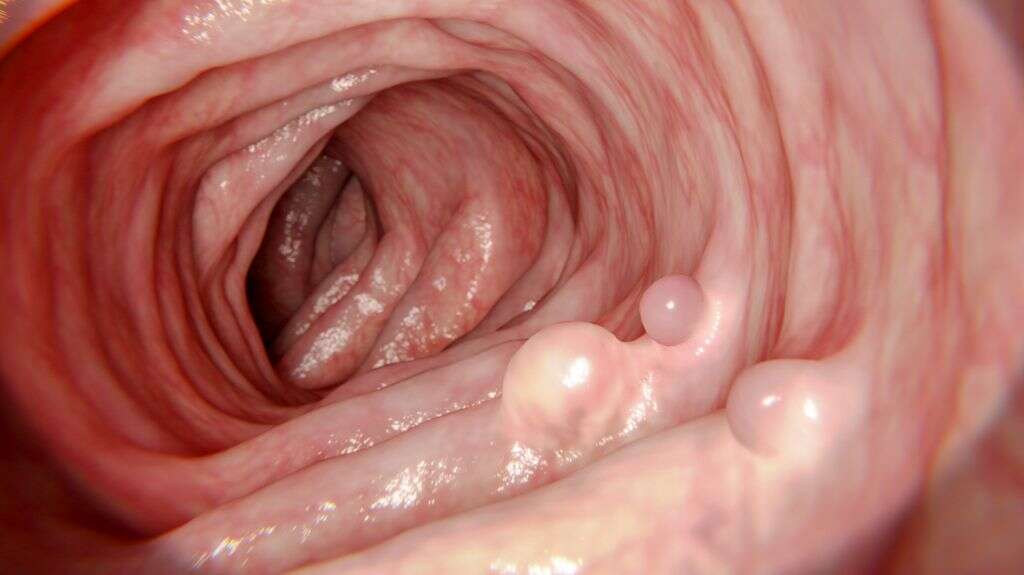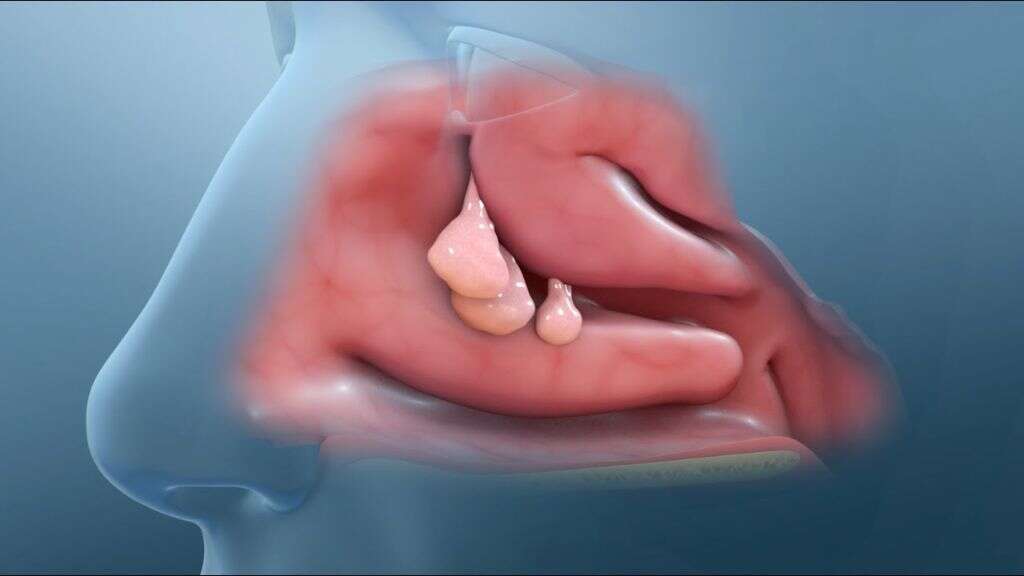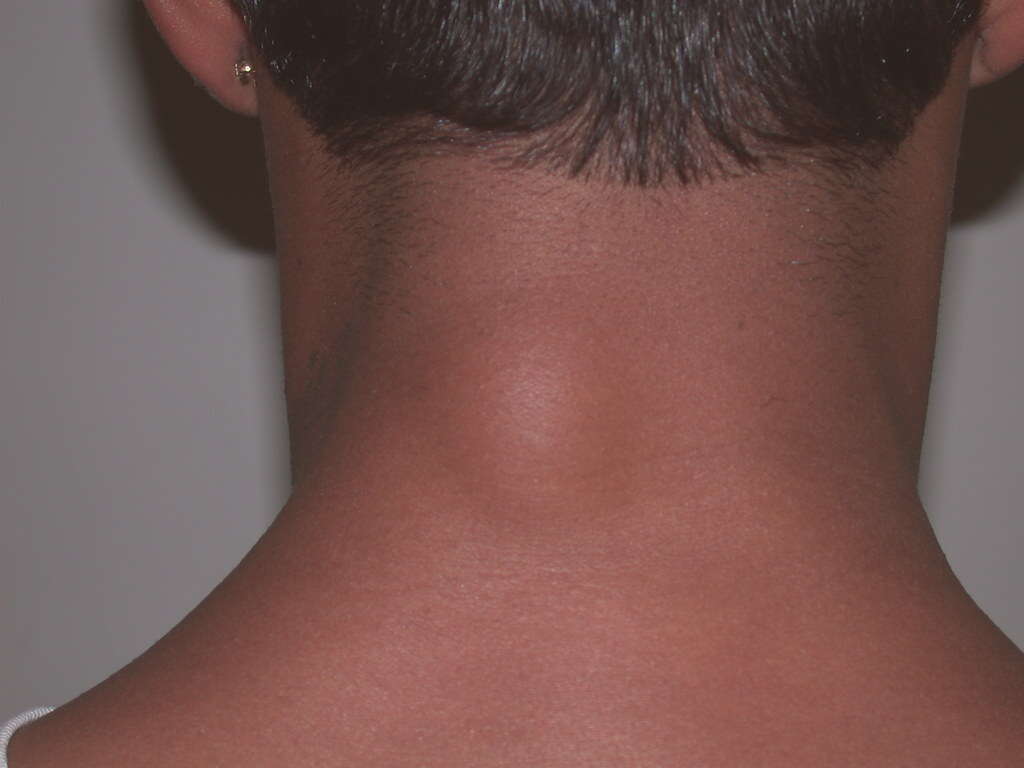What Is a Polyp?
A polyp is a small-sized, projecting growth that usually looks like a mushroom or a bump on the mucous membranes. Pathologically speaking, there are two main types of polyps: sessile and pedunculated. If the polyp is attached to the mucous membrane in a stalk, it is referred to as pedunculated. If there is no stalk, it is sessile.
The most common place where polyps grow is the colon, but they can also be found in other places including the stomach, ear canal, urinary bladder, cervix, uterus, small intestine, and vocal cords. Polyps can also appear in any other part of the body that has mucous membranes. Most polyps are benign. However, with time, they may turn pre-malignant or malignant.
1. Symptoms of Polyp
Usually, having polyps is asymptomatic until it becomes very advanced. In many cases, polyps are found while performing other tests and operations, or treating other medical conditions. If your family has a history of polyps, or you have risk factors, your doctor may suggest that you undergo routine screening. When the condition is discovered early, there is a big chance of removing all the polyps without any complications. The symptoms of polyps depend on where they are. For example, people having colon polyps usually experience blood in stools, abdominal pain, changes in the color and consistency of stool, iron deficiency anemia, and changes in bowel habits.
2. Causes of Polyps
The causes of polyps depend on where they appear. For example, colon polyps usually appear due to unhealthy lifestyles such as eating high-fat foods and lots of red meat, not eating enough fiber, smoking, and obesity.
Another example is throat polyps, which usually appear due to injuries to the throat from shouting all the time. Teachers are likely to get throat polyps.

3. Other Causes
Sometimes, the condition does not have clear causes, or it may have a combination of causes. The most common causes of developing polyps include inflammation, foreign bodies, having cysts and tumors, genetic factors, including mutation of genes, and excess hormones.
Most polyps are benign. However, they usually divide rapidly and fill the space where they appear; a mechanism of division resembles malignant tumors.
4. Other Conditions Associated with Polyps
Having some chronic condition such as chronic inflammation can lead to the development of polyps. Aural polyps, which occur in the ear canal, can be the result of chronic ear infections or inflammation.
Nasal polyps usually appear as a result of chronic inflammation of the sinuses, while vocal polyps usually appear due to recurrent acid reflux and allergies. Stomach polyps are usually a consequence of constant irritation of the mucosal lining of the stomach wall.

5. Complications of Polyps
Complications depend on the location of the polyp. If the polyp is in the ear canal, it may lead to hearing loss, or bleeding from the ear canal. Polyps in the cervix usually develop no symptoms or complications, but some women may experience pain during sexual intercourse or menstruation, in addition to unusual discharge.
On the other hand, polyps in the uterus can lead to infertility, vaginal bleeding, and irregular menstrual cycles. Polyps in the colon and large intestine lead to rectal bleeding, abdominal pain, constipation, and diarrhea, while polyps in the stomach can cause nausea, vomiting, bleeding, and tenderness. Polyps in the throat or vocal cords lead to difficulty in breathing and hoarseness. Finally, polyps in the bladder can lead to bloody urine and pain during urination.
6. Disease Process
Development of polyps depends on risk factors such that the more the risk factors are, the higher the chances of developing them. Smokers, for instance have a higher risk of developing bladder polyps. Women over 40 and women who have given birth to more than one child have a higher risk of developing uterine polyps, while women over 20 years and premenopausal women have a higher risk of developing cervical polyps.
Teachers and people who speak loudly all the time, putting too much stress on their vocal cords, have a high risk of developing throat polyps. Gastrointestinal reflux disease is also considered a risk factor for throat polyps. If you have any of these conditions, you should talk to your doctor about the risks of developing polyps.

7. Diet and Lifestyle Changes against Polyps
While nasal, and uterine polyps among others, cannot be prevented with diet or lifestyle changes, a healthy diet and lifestyle can play a significant part in preventing colon and rectal polyps. For example, if you have a high risk for developing polyps then eating a healthy diet that is high in vegetables and fruits will reduce your risk of developing polyps.
In addition, decreasing or stopping alcohol consumption and quitting smoking can also help. Developing healthy habits such as exercising regularly and maintaining a healthy weight also decrease the risk of developing colorectal polyps.
8. Diagnosis
The diagnosis process starts by performing a physical exam. Your doctor will seek to get a full medical history in addition to the current complaint. If you have a high risk for developing polyps, the doctor will order x-rays and CT scans to see if there are polyps or not, and if there are polyps then further examination will determine their extent and size.
A biopsy may also be done to confirm whether the growth is benign or malignant. Taking a biopsy depends on the location of the polyps. For example, if the polyp is in the large intestine, a colonoscopy should be performed, while for polyps located in the vagina or cervix, a Pap test will be done.

9. Treatment
Some types of polyps do not require treatment, especially after confirming that they are not dangerous. For example, throat polyps do not require treatment as they disappear after voice therapy and resting your vocal cords. Other types of polyps may require surgical removal to prevent the development of malignant tumors.
In general, the treatment of polyps depends on many factors such as the type of polyps, whether they are benign or malignant, their number, location, and sizes. Colorectal polyps can even be removed during a colonoscopy. Progestin and gonadotropin-releasing hormone agonists usually treat cervical and uterine polyps, and nasal steroids are usually used to treat nasal polyps.
10. Long-Term Outlook
The long-term outlook is determined by the particular diagnosis, and varies depending on many factors such as the type of the polyp, whether they are benign or malignant, and the overall condition of the patient. Most benign polyps do not even require worrying about. However, your doctor may recommend removing them surgically to avoid any problems in the future. Benign polyps can develop to be malignant.
They also can cause health problems such as infertility. Besides, there is a chance that polyps can reappear, especially colon polyps that have a 30 percent reappearance rate. It is important to have follow-ups for 3 to 5 years after removing polyps.











